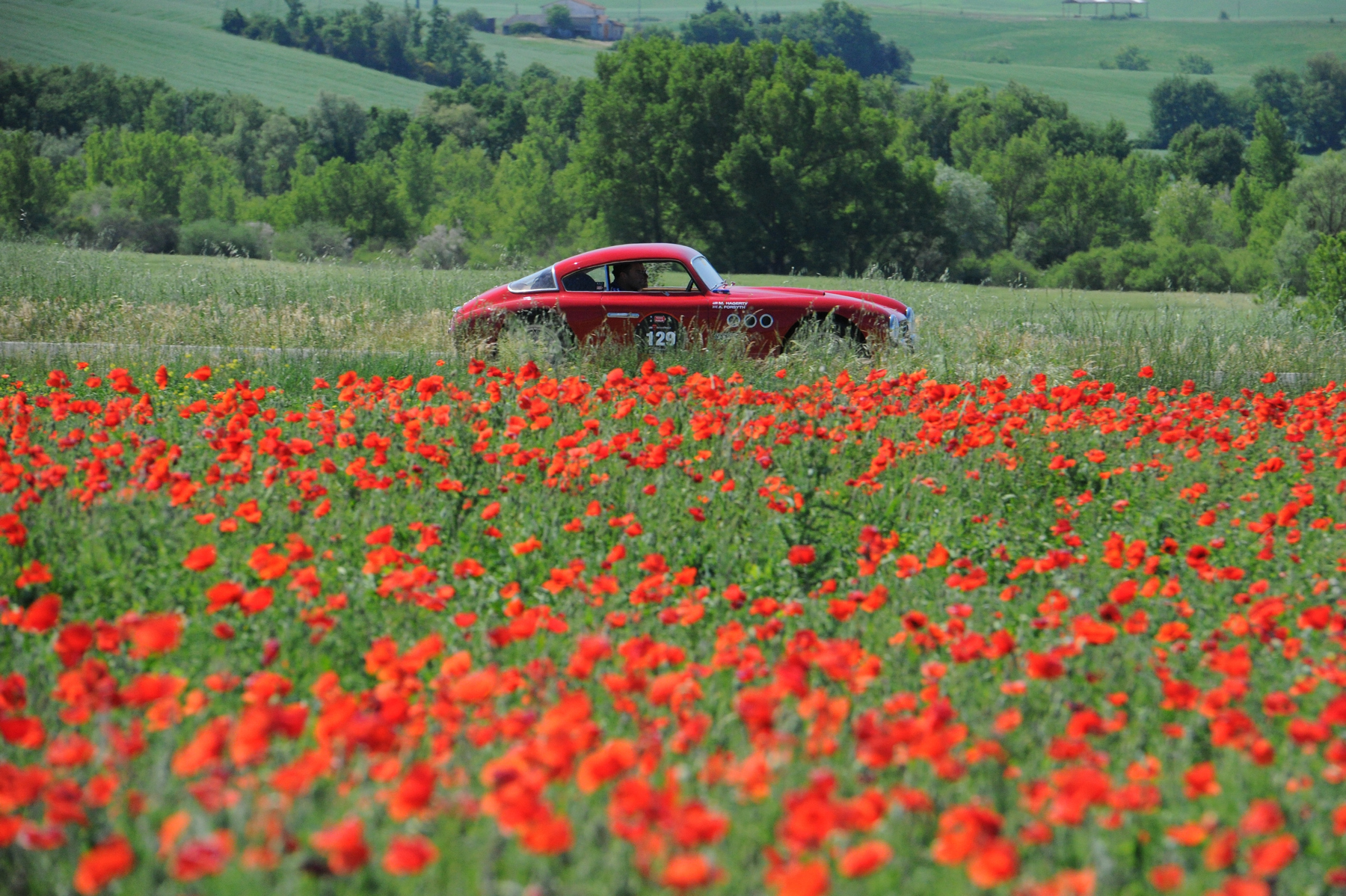Media | Articles
Hagerty duo completes second Mille Miglia in very first Abarth
Perseverance pays.
In 1950, Guido Scagliarini took his brand new Abarth 205A – the very first built – to the Brescia, Italy, starting line of the Mille Miglia. The 1100cc Vignale coupe retired before reaching Rome.
The Abarth’s current owner, Mark Gessler, returned the car to the Mille Miglia 59 years later, but he made it only as far as Florence. This year, however, the Hagerty Collector Car Insurance team of McKeel Hagerty and Angus Forsyth completed the Abarth’s Italian journey, making it all the way to the finish line for the first time in the car’s 61-year history.
Although the pair finished 234th out of 376 cars, it felt like a victory. Dave George, who provided support for the Scuderia Sports team during May’s grueling 1,000-mile classic car rally from Brescia to Rome and back, said it best: “Finishing the Mille Miglia is essentially winning.” That’s good news for Hagerty (CEO) and Forsyth (Hagerty International Managing Director), who drove the stunning Abarth – number 205101 – on the grueling course that had first defeated the car more than six decades earlier.
As Hagerty and Forsyth learned, the Michelotti-designed and Vignale-bodied Abarth was not ideal for driving all night with slow traffic and several stops in towns along the route. “On the first night of the race, we got to within 30 kilometers of the last checkpoint when the car came to a grinding halt,” Forsyth said. As it turned out, “the battery charging system could not keep up with the headlights being on for such a long period, and they effectively drained the battery. The car had an electronic fuel pump, so we were somewhat stranded.”
Marketplace
Buy and sell classics with confidence
George and the Scuderia Sports team came to their rescue – with a simple solution. “To get the car rolling again, we put in another battery,” George said. “People don’t understand that all of the Mille Miglia cars have electrical issues unless the electrical charging system is upgraded and a deep cycle battery of larger capacity is added and they learn to conserve power.
“Part of the issue is some competitors use electricity the way they would on their regular car and that there is less high-speed running – which helps charge the batteries – than when the cars ran in period. When in a group of cars, it’s best to run with parking lamps only and let the battery recharge. Generators from the pre- and post-war period aren’t up to modern loads. You can’t use what you don’t have. There is so much night driving; the first night is when everyone has trouble” – and that’s exactly what happened to Hagerty and Forsyth.
“Being so close (to the checkpoint), it was somewhat frustrating,” Forsyth said. “The team mechanics arrived and we managed to get just enough charge into the battery to get it home, but we missed the final check-in by two minutes. It was now 3 a.m. and we had been driving for nearly eight hours.”
Forsyth said the Abarth, which was geared for high-speed running, struggled at low speeds on steep inclines. “At one point we stalled on a hill and I had to have McKeel at the back of the car to stop it from rolling back while I did my best to get enough power to get up the remainder of the slope,” Forsyth said. “Once it was going I could not afford to stop and retrieve McKeel, so he had to run to the top of the hill … none too pleased!”
Mark Gessler owns the Abarth – which won the Trofeo Gerard-Perregaux at the 2009 Villa d’Este Concorso d’Eleganza – and offered an interesting historical note.
“When the car appeared in the 1950 Mille Miglia, it had an aerodynamic nose and rear extensions, which were removed after the race,” he said. “The filled rivet holes can still be seen and felt in the body work.”
A 1933 Aston Martin Le Mans won the 2011 Mille Miglia, followed by a 1927 Bugatti Type 37. Scuderia Sports, an international historic racing team established by Gessler in 2009, had three vehicles finish among the top 10 – a 1933 Alfa Romeo 6C 1500GS Zagato placed third, a 1933 Aston Martin Le Mans followed at fourth and a 1951 Nash-Healey took seventh.
My favorite part of the Mille Miglia is seeing all of the cars we’ve prepared for the event finish,” George said. “That’s something for which we have a perfect track record since we first supported cars for the event in 1988 and nearly every year since.”
For Forsyth, who like Hagerty was participating in his second Mille Miglia, the best part of the event is “blasting through Rome at night. The streets are cleared of both cars and pedestrians, and we have a police motorcycle escort of 10 bikes tearing through the streets of Rome at high speed, passing all the historic sites like St Peter’s. It’s an experience I really don’t think you could pay for if you tried.”
The next Mille Miglia is tentatively scheduled for May 11-20, 2012, and will be confirmed in September. For more information, visit www.1000miglia.eu.










